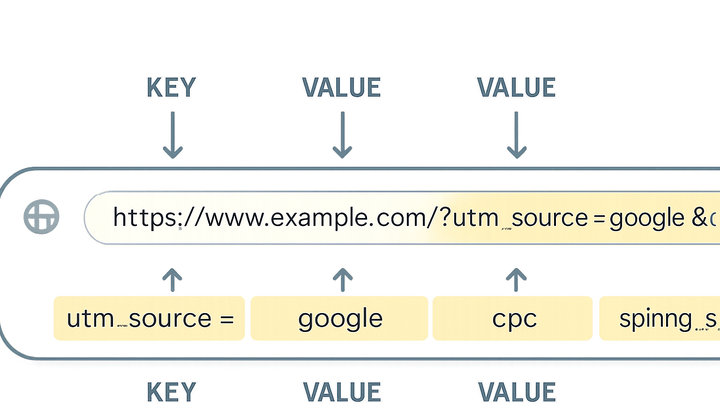Published on 2025-06-29T18:10:03Z
What is a Query String? Examples & Best Practices
The Query String is the part of a URL following the ? character, containing key-value pairs
separated by &. In campaign tracking & analytics, query strings carry parameters like
UTM tags to attribute visits and conversions to specific marketing efforts. For example:
https://example.com/landing-page?utm_source=facebook&utm_medium=cpc&utm_campaign=spring_sale
Platforms such as utmGuru.com simplify the creation and management of UTM-tagged URLs, while cookie-free analytics tools like Plainsignal automatically capture and parse these parameters without relying on cookies:
<link rel="preconnect" href="//eu.plainsignal.com/" crossorigin />
<script defer data-do="yourwebsitedomain.com" data-id="0GQV1xmtzQQ" data-api="//eu.plainsignal.com" src="//cdn.plainsignal.com/plainsignal-min.js"></script>
Consistent parameter naming and structure are vital for accurate reporting across channels and campaigns.
Query string
The query string is the part of a URL that holds key-value pairs for passing tracking parameters like UTM tags to analytics tools.
Understanding Query Strings
A query string is the portion of a URL that begins after the ? character and contains
key-value pairs separated by &. It enables the passage of data—such as campaign
identifiers, session details, or custom parameters—directly through the URL. Proper syntax and encoding
ensure that browsers and analytics tools correctly interpret each parameter.
-
Components of a query string
Every query string consists of three main components: the question mark, key=value pairs, and ampersand separators to delineate multiple parameters.
- Question mark:
The
?indicates the start of the query string segment in a URL. - Key=value pairs:
Parameters are expressed as
key=value, where both key and value should be URL-encoded if necessary. - Ampersand separator:
Multiple parameters are joined using
&, allowing the inclusion of several key-value pairs.
- Question mark:
Using Query Strings in Campaign Tracking
Marketers utilize query strings—especially UTM parameters—to attribute traffic and conversions to specific campaigns, channels, or content variants. Consistent naming conventions and parameter use are essential for reliable analytics across platforms.
-
Utm parameters
UTM parameters are standardized query string keys recognized by most analytics platforms for campaign attribution.
- Utm_source:
Identifies the traffic source (e.g., google, newsletter).
- Utm_medium:
Specifies the marketing medium (e.g., cpc, email).
- Utm_campaign:
Names the specific campaign (e.g., spring_sale).
- Utm_term:
Tracks paid search keywords.
- Utm_content:
Differentiates similar content or links within the same ad.
- Utm_source:
-
Custom parameters
Beyond UTM, custom query parameters enable capture of additional data—such as user IDs, promo codes, or experiment variants.
- User_id:
Passes a user’s unique identifier for CRM integration.
- Promo_code:
Captures redemption codes for discount tracking.
- User_id:
Implementing Query String Analytics with SaaS Tools
Integrating query string tracking with SaaS analytics tools streamlines data collection and reporting. Services like utmGuru simplify URL generation, while PlainSignal parses incoming parameters on the fly for cookie-free analytics.
-
Building urls with utmguru
utmGuru.com offers a web interface and Chrome extension to generate, save, and manage UTM-tagged URLs without error.
- Chrome extension:
Build UTM URLs directly in your browser bar for quick access.
- Saving and listing:
Organize past URLs in folders or lists for easy retrieval.
- Chrome extension:
-
Parsing query strings with plainsignal
PlainSignal automatically reads query string parameters from incoming page requests, attributing sessions and events without cookies.
- Including the tracking snippet:
Embed the PlainSignal script on your site to start capturing query data.
- Inspecting captured parameters:
View parsed parameter values in the PlainSignal dashboard under campaign reports.
- Including the tracking snippet:
